


1. System noise comparison of similar manufacturers
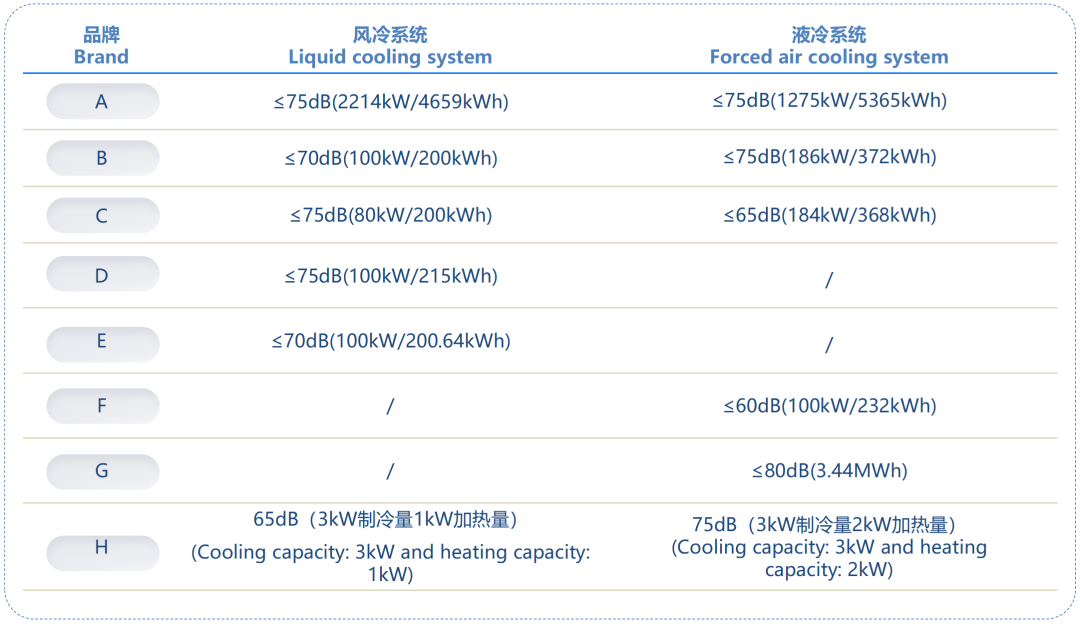
Measured noise data of EnerArk in laboratory: 71.8dB at position 1, 68.1dB at position 2, 67.9dB at position 3 and 69dB at position 4; Field noise measured data at customer A's project site: Maximum 72.8 dB.

Comparison & analysis of forced air cooling VS liquid cooling in production and installation:
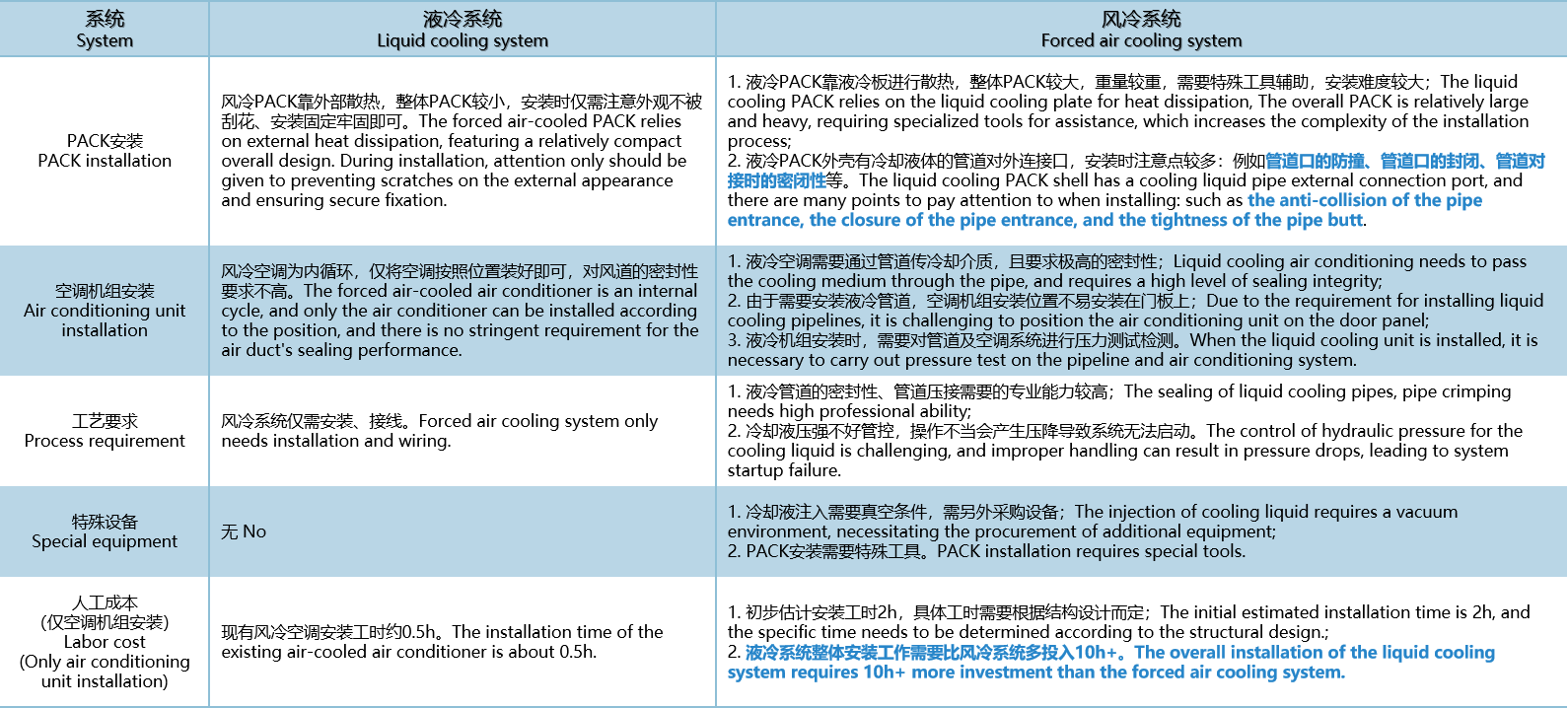
Liquid cooling is more complex than the forced air cooling in production and installation, and the overall installation work requires more time than air cooling system.
Chapter Eight: After-sales service comparison1. Comparison & analysis of fault points for the forced air cooling VS liquid cooling:

2. Comparison & analysis of failure points for the forced air cooling VS liquid cooling:
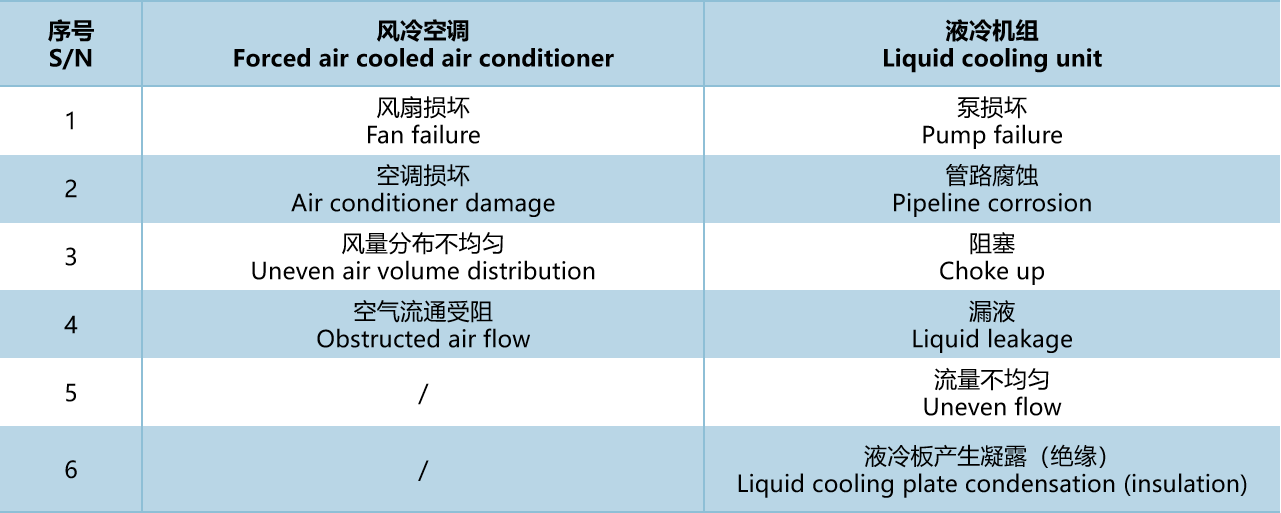
3. The difference of battery PACK after-sales service:
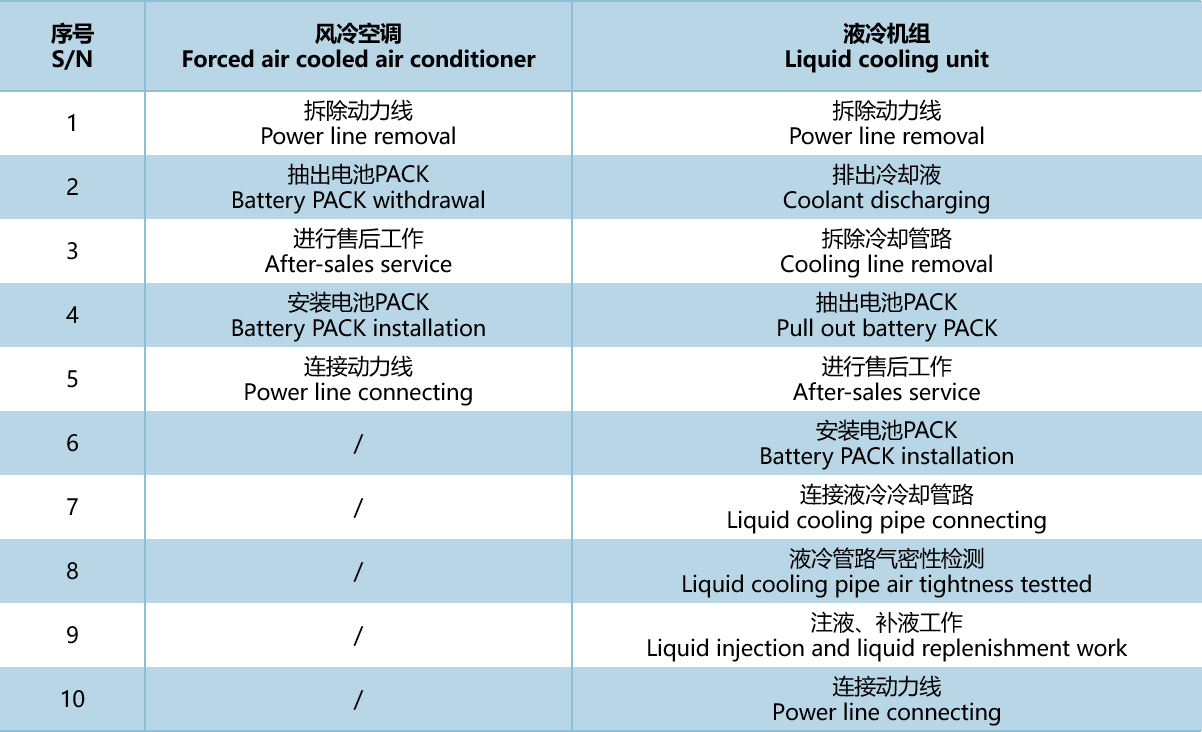
(1) Regarding the after-sales service of the battery PACK, the workload, the number of tasks, and the difficulty of the steps for forced air cooling differ significantly from the liquid cooling system, with the forced air cooling presenting a clear advantage.
(2) Preliminary estimates indicate that, excluding the battery PACK component, the disassembly and assembly time for air-cooled battery PACK is within 20 minutes, while the time control for disassembly and assembly of liquid-cooled battery PACK is set at 2h+.
Chapter Nine: Operation & maintenance comparison1. Forced air cooling and liquid cooling system maintenance contents and cycle:
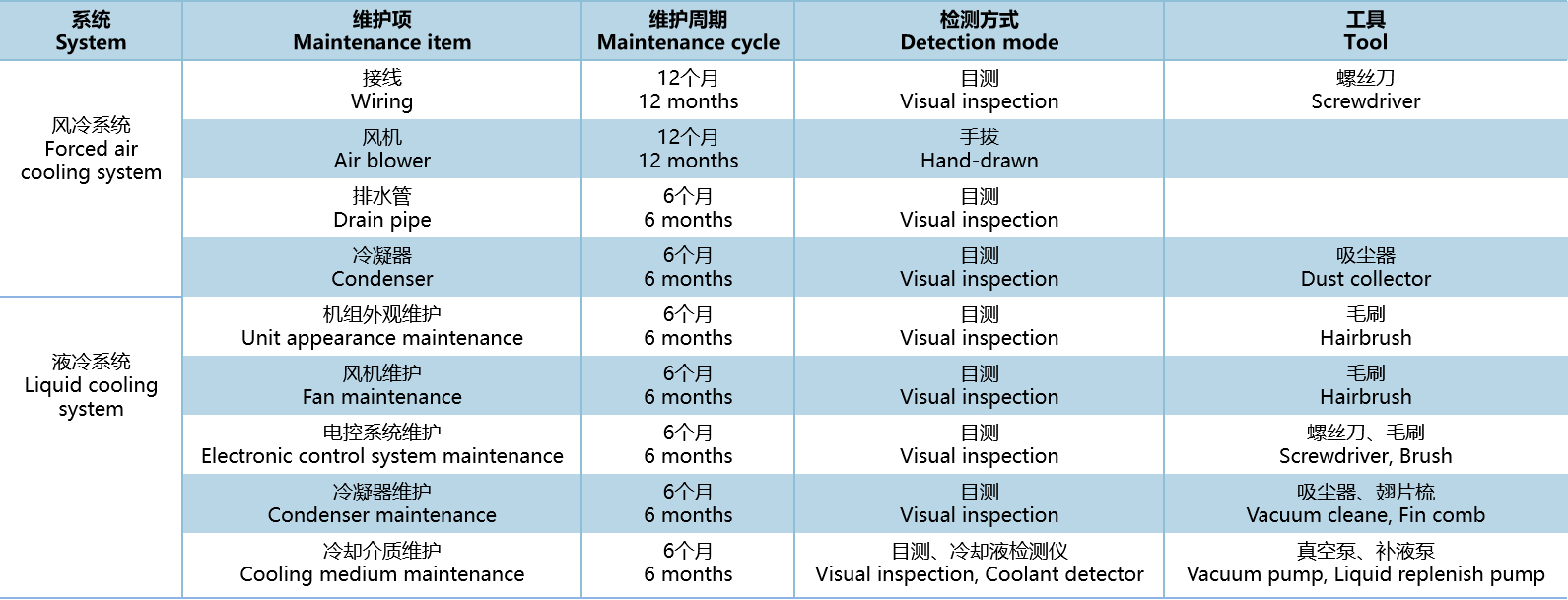
(1) The maintenance workload for the forced air cooling system is relatively low, with a longer maintenance cycle and lower labor costs and travel expenses.
2. Maintenance requirements for forced air cooling and liquid cooling systems include:
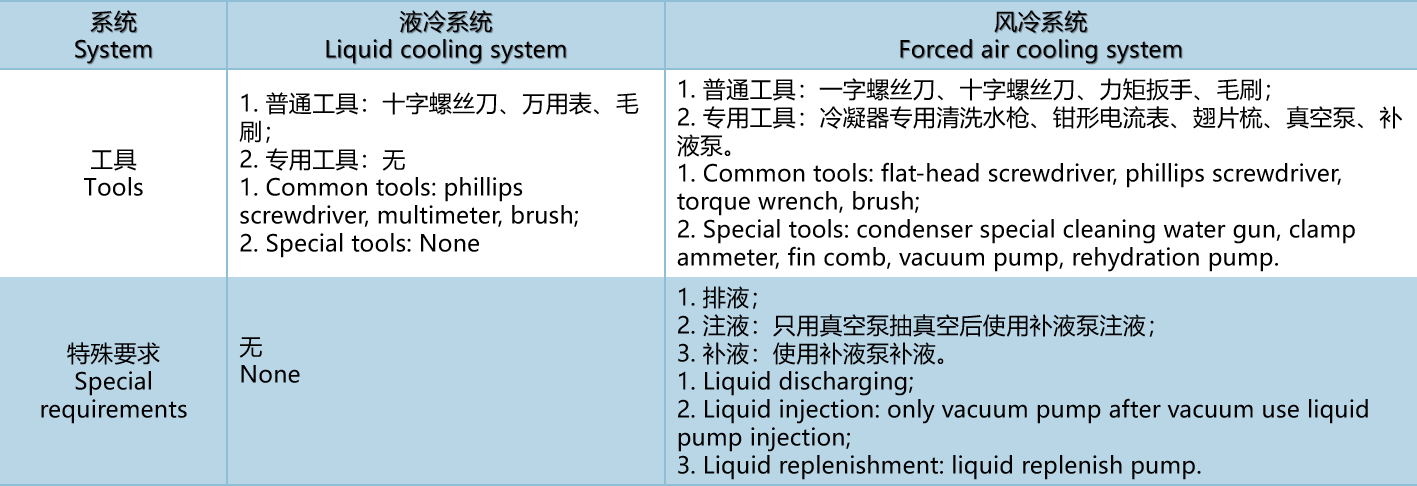
(1) The forced air cooling system has relatively low requirements for maintenance equipment, with fewer specialized tools needed.
(2) In addition to regular tools, the liquid cooling system requires specialized tools for maintenance. The maintenance process involves additional steps, including drainage, injection, and replenishment of liquids. This demands a higher level of expertise and professionalism.
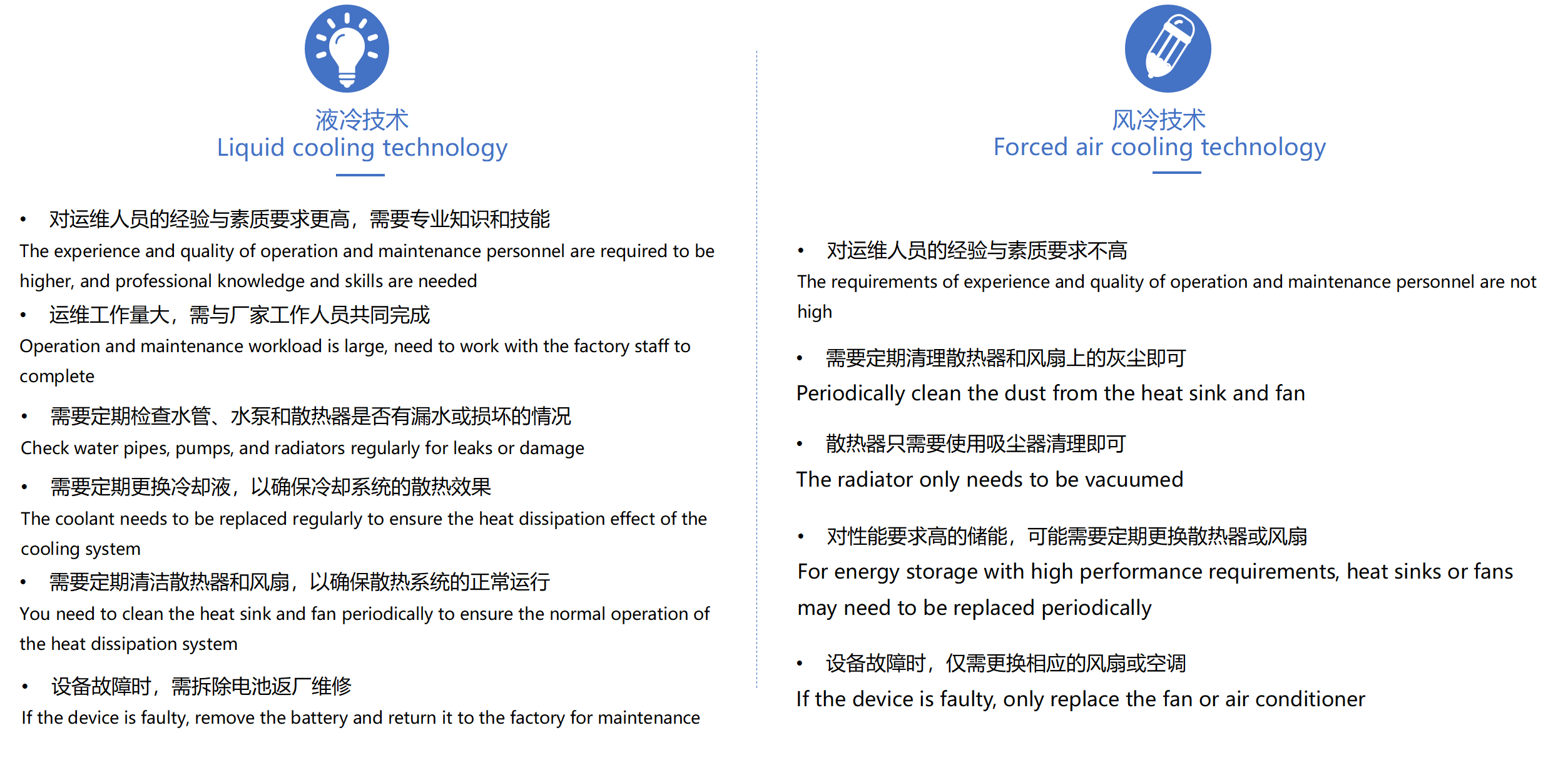
The maintenance of the liquid cooling system is relatively complex and requires more steps and precautions. The maintenance of the forced air-cooled system is relatively simple and the cost is low. For example, there are 5 100kW/215kWh air freezers and liquid freezers, and the operation and maintenance time of liquid freezers is 2-3 times that of forced air cooling.
Chapter Ten: Cost comparison1. Taking 215kWh C&I battery energy storage cabinet as an example, the proportion of cooling system cost:
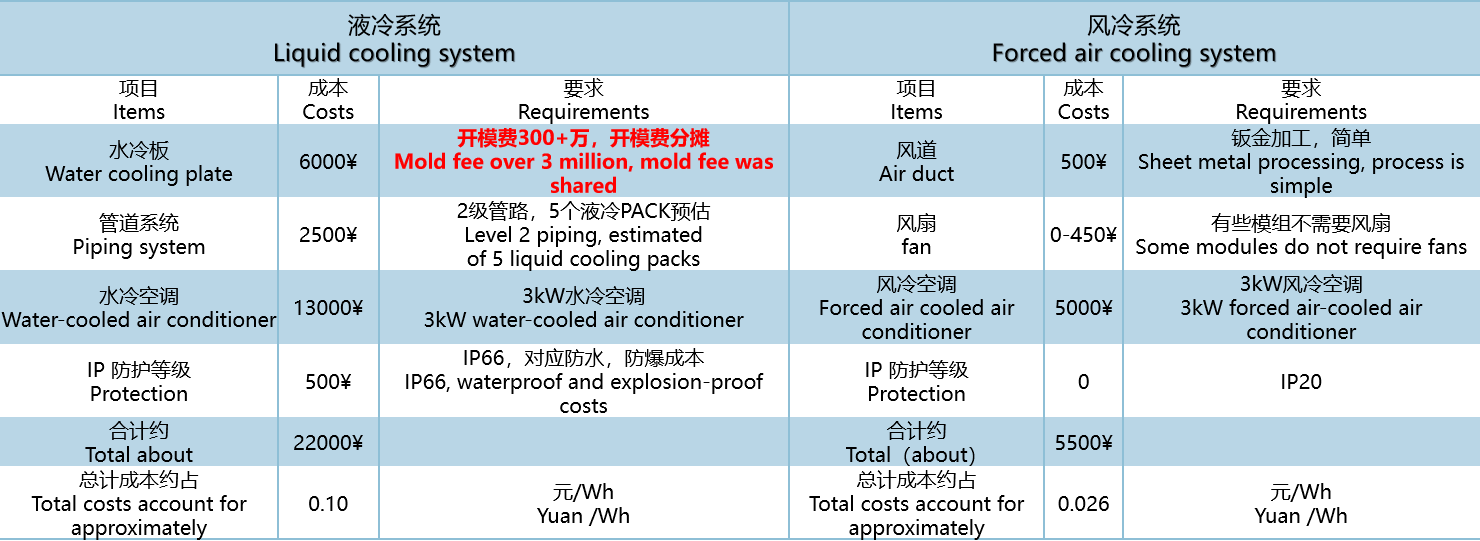
(1) The mold cost for liquid cooling is relatively high. The design of the water-cooled plate involves mold making, trial molding, verification, and mold adjustment, requiring a significant investment of time and effort in research and development. Although there are standard mold options, considering the patent, and most companies are reluctant to disclose or share such information.
(2) The prevailing market prices for commercial energy storage products are 1.3 yuan/Wh (liquid-cooled) and 1.1 yuan/Wh (air-cooled).2. In commercial and industrial energy storage systems, the cost difference between forced air cooling and liquid cooling primarily shows in the following aspects:
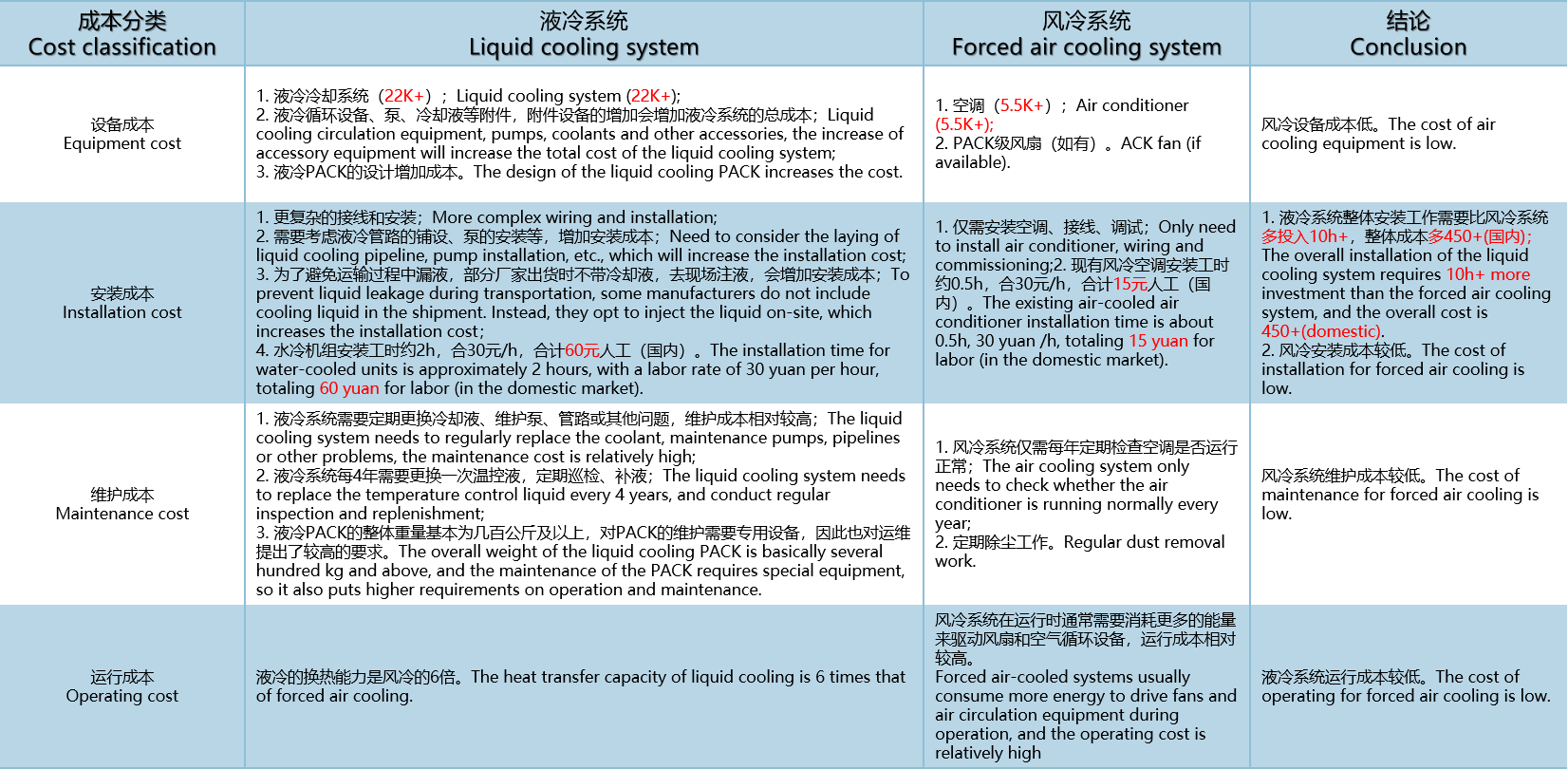
Environmental adaptability of forced air cooling and liquid cooling systems
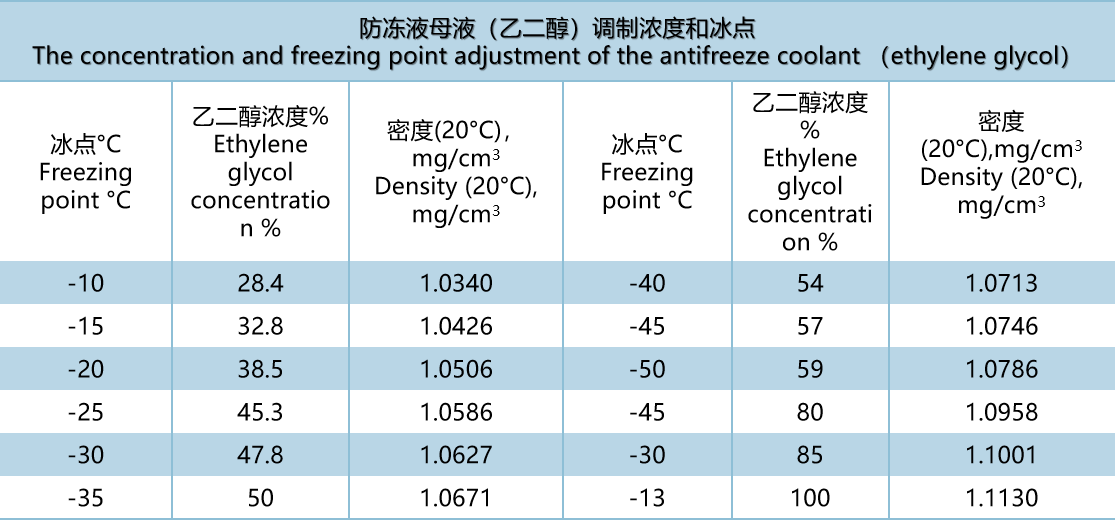
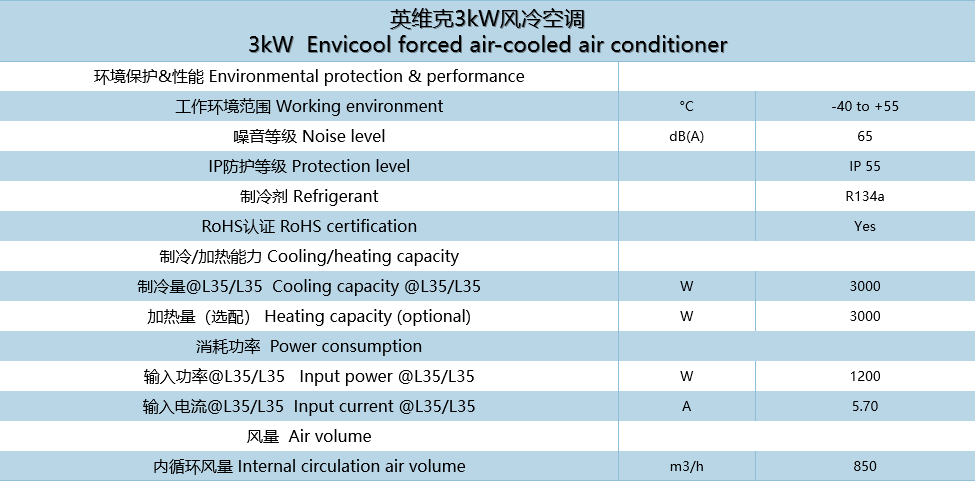

(1) Currently, a 50% ethylene glycol solution is widely used as a coolant in the market, with a freezing point of approximately -35°C. The operational lower limit of water-cooled air conditioners in the market is generally ≥ -30°C. Therefore, liquid cooling energy storage systems are not suitable for use in extremely cold temperature regions. Otherwise, the freezing of the coolant may block or burst the pipes, causing damage to the cooling system (with the first startup being particularly affected). The heating function inherent in liquid cooling requires the coolant to be heated to 20°C before normal startup and operation can occur;
(2) Functional industrial air conditioners available in the market can maintain their heating function at temperatures as low as -40°C, heating the air inside the cabinet to 20°C, thereby sustaining the operating temperature for battery systems;Applicable application of forced air cooling and liquid cooling systems
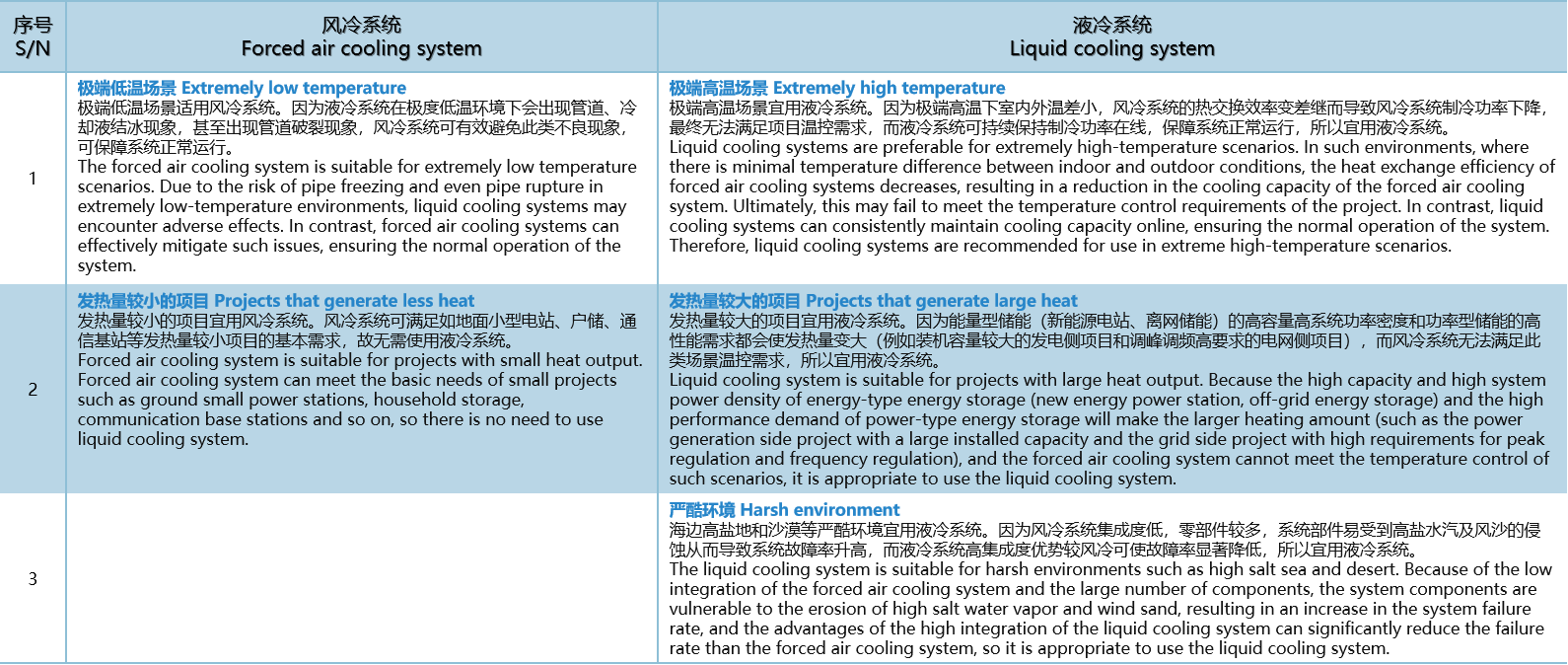
Comprehensive comparison
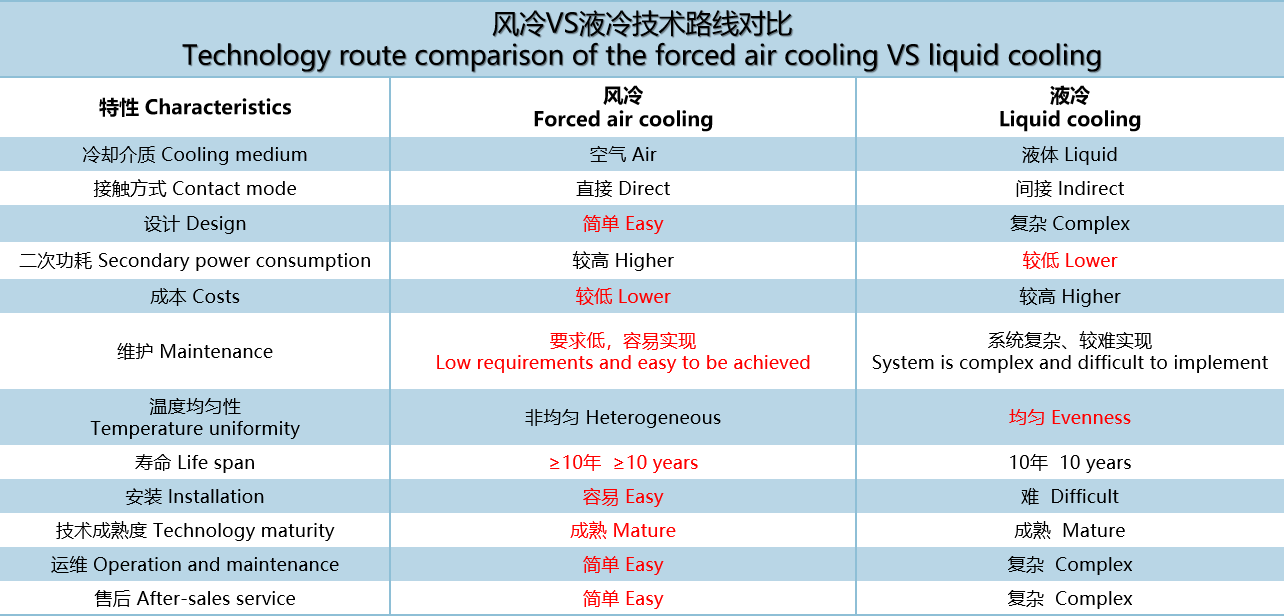
For the C&I energy storage applications, the forced air cooling system have more advantages than liquid cooling system.